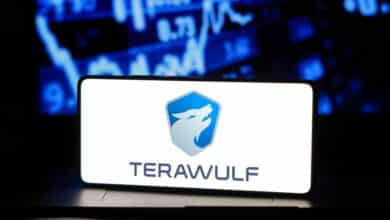The Ultimate Filecoin Handbook: Everything You Need to Know as a Beginner

Filecoin is a decentralized storage and filing network that uses blockchain technology to build a cloud storage marketplace using a pseudocode system. Unlike other centralized systems, it is a new entry in the digital currency sector as a DeFi system, giving consumers a smooth transaction experience without needing intermediaries.
Due to the vulnerability of centralized exchanges to hacking and data breaches, significant annual losses occur. Because of the exponential expansion in data generation, there is a greater need for storage space, making Filecoin a more realistic alternative. Users may pay a charge to store their files on the network and earn money by mining the Filecoin token or leasing hard-drive space to others. The platform facilitates the transaction process, and users may meet, lend, and borrow storage space without requiring a centralized authority.
The COVID-19 pandemic has slowed the project’s development since it formally began on August 7, 2020. However, some users have tested the service, and its potential as a decentralized storage solution remains high.
History of the Filecoin Network
The Filecoin network was founded in 2017 to meet the increasing demand for dependable storage solutions. The network had a token sale in October 2020, the most extensive initial coin offering (ICO) ever recorded, generating more than $250 million. The first $150 million was raised within an hour of the live sale. Previously, the project had pre-launch sales that drew up to 150 different investors, raising more than $50 million. However, the tokens were sold at three-quarters of a dollar discount, which sparked public outrage, mainly because only investors earning at least $200,000 per year were eligible to participate.
During the launch, 70% of the total tokens available for distribution were allocated to the platform’s space providers. Half of the remaining tokens were distributed to the development team and founder, with the other half distributed in a 2:1 ratio to investors and the establishment’s foundation.
For file storage, the Filecoin network works alongside IPFS. Although the two systems are similar, the main difference is that IPFS does not charge users fees and does not generate revenue for users. Filecoin, on the other hand, has a fee but may also be used to generate money on the network through the digital currency, the home token.
While other well-known platforms in the same industry have network capacities measured in petabytes, Filecoin has the potential and available resources to outperform even Storj and Sia, which currently have network capacities of 100 and 2 petabytes, respectively.
Because the transaction is transparent, users can contact miners, negotiate a deal, and ensure their information is securely stored using the blockchain on the service. Miners who provide space to people in need are compensated for each person who borrows storage. The service also compensates them for providing additional space on the Internet.
How Does Filecoin Function?
The storing of information on the platform entails one user contacting another and paying a fee. Storage price is set by an open selection process in which space providers compete to give the lowest costs for storing a certain amount of data.
Storage and retrieval deals are available on the site. Storage providers must offer documentation to verify that the information is safe regularly, and payment is provided when the owner needs to recover the data. Payments are paid at agreed-upon milestones rather than after the contract in Retrieval.
Both miners and consumers gain from using the platform. Miners make money through online service fees and incentives, while customers pay less than centralized systems like Apple Cloud and Amazon Web Services.
Space suppliers must give the service frequent proof of data storage to avoid fraud. Failure to present evidence may result in penalties such as decreased payment or contract termination.
The platform charges a fee for messages and transactions, which varies based on data size and contract term. Both sides pay fees, with the user paying more owing to the miner’s incentive. Miners are rewarded with FIL, the platform’s native digital currency, which can be readily purchased on prominent decentralized exchange platforms.
On the platform, communication occurs via peer-to-peer channels, with transfers between customers handled by Storage and Retrieval nodes. Storage nodes rent out additional space on people’s hard drives, while retrieval nodes provide high network speed and serve as storage node support.
Bottom line
The worlds of technology and finance are fast expanding, and many people are anxious to capitalize on chances in the cryptocurrency market, which is primarily seen as the future of both sectors.
The Filecoin network was launched after three years of hard labor, and it is positioned to gain from the expected drop in popularity of centralized exchanges. As more people offer storage space for rent, the value of the FIL token is expected to rise further, having already risen from $1 to nearly $30 in just three months.
While the FIL token’s outlook is positive, it’s important to remember that unforeseen circumstances could cause it to lose value. Consequently, investors with a low-risk tolerance should proceed with care when contemplating this or any other new business initiative.
Tokenhell produces content exposure for over 5,000 crypto companies and you can be one of them too! Contact at info@tokenhell.com if you have any questions. Cryptocurrencies are highly volatile, conduct your own research before making any investment decisions. Some of the posts on this website are guest posts or paid posts that are not written by Tokenhell authors (namely Crypto Cable , Sponsored Articles and Press Release content) and the views expressed in these types of posts do not reflect the views of this website. Tokenhell is not responsible for the content, accuracy, quality, advertising, products or any other content or banners (ad space) posted on the site. Read full terms and conditions / disclaimer.







